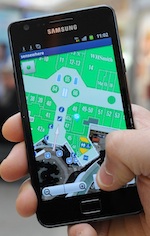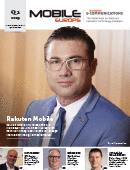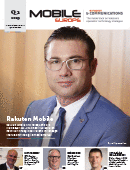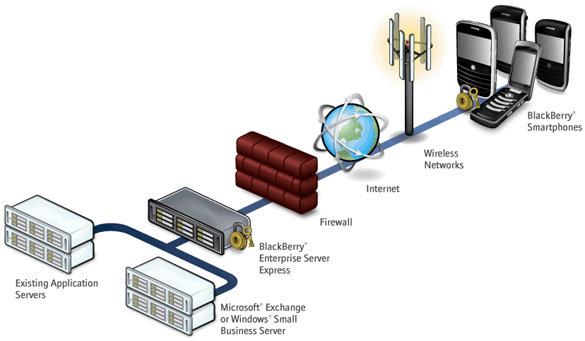Apple's decision to ditch Google as mapping provider sends a signal that many have missed, says Rob Palfreyman, CEO of wireless location and mapping company sensewhere.
Rob Palfreyman, who wrote the guest post that follows this intro, argues that Apple's intentions are clearly to head indoors, and to integrate location information much more closely with its services.
Of course, Palfreyman is CEO of a wireless location and mapping company, spun out of academia, that has developed a new method of automatically mapping indoor locations — so it may be that he's hoping that the move to providing very accurate and granular indoor location is afoot. Indeed, there's one paragraph in this article (italicised) that specifically makes a case for sensewhere's technology.
Wish fulfilment aside, though, is Palfreyman right in his conclusions: that location is heading indoors, that it is going to be much more tightly integrated to services, and that the big players (Google included) are still only starting out on the location services journey?
Apple maps: Where is Apple going?
Rob Palfreyman, CEO, of indoor location company sensewhere
In early June Apple announced that it was dropping Google as the default provider of mapping services in iOS.
As is so often the case, Apple’s announcement immediately whipped large swathes of the technology community into a lather of excitement. What did the new system do? Is it better than Google Maps? Would it demonstrate the famous Apple ‘cool’ factor? When can we get it?
Perhaps, however, the questions we should really be asking are; why did Apple make this move in the first place, and what do the new features suggest about where Apple thinks the future of location lies?
Preparing for the inevitable future of seamless, universal positioning
I suspect that Apple’s desire to control its own maps is, at least in part, an extension of its central philosophy; that in order to provide a great user experience you need to control as many levels of the phone ecosphere as possible, from the hardware to the software and internet services.
We’re already seeing tighter integration with the OS, twitter, imaging, Siri, the provision of local information through Yelp, etc. And Google is playing much the same game, to a different degree, with Places, Local, etc.
Ultimately, Apple’s interest in mapping, and desire to disengage from Google, reveals something deep-seated about the future of location; that the significance of accurate positioning on phones is extending far beyond the ‘traditional’ uses; maps, navigation and ‘where am I now’: Instead, location information is becoming tied into and used by systems and apps at a much more fundamental level.
In terms of positioning techniques, hardware and location databases, the general trend in phones has been towards a more ‘holistic’ approach using an increasingly wide variety of sensor-information and databases. These range from from GPS to MEMs, magnetometers and, in our case, dynamic, crowdsourced databases of RF beacons using the phone’s standard radio technology.
As companies such as Apple make increasing use of these varied positioning techniques, and place more emphasis on the provision of location information both indoors and out, the whole location experience will become more seamless. When this happens, consumers are likely to see location as an ‘everywhere, all of the time’ service that they simple expect to work all of the time. Apps will take advantage of this new information to integrate location functionality in ways we are unlikely to have fully anticipated yet. Use of positioning information will simultaneously become more prevalent and less obvious.
It seems entirely likely that Apple is preparing itself for exactly this; a future where location is universal and somewhat commodotised. And anticipating this, why would Apple have continued to share its valuable location information with Google? Not only would increasingly deep integration of location in phones have made Apple severely vulnerable to a late-stage separation from Google’s service, but they would potentially be handing more and more valuable location data to a direct competitor in the handset business.
A closer look at some of the new features
Apple’s choice to use vector maps in its new product is really interesting. This may well lead to faster loading times, better scalability, and less reliance on data connectivity. Many of the major phone manufacturers and mapping app providers seem to be on a road to providing offline maps, and vector mapping, with its lower storage requirements, should fit in well with that roadmap. Such stored, offline vector maps could be particularly useful in areas where data signals drop out, such as the ‘urban canyon’, or, in particular, inside the walls or metal-doped glass of buildings.
Another much-touted feature; Apple’s move towards turn-by turn navigation, could, of course, be anticipated a long way off. Android and Windows phone have had this feature for a long time. But while smartphones are making a small yet significant dent into the market share of in-car satnavs, it seems likely that this technology will also be highly applicable to the world of pedestrian navigation.
The absence of a ‘Streetview-like’ function in Apple’s new system has also been widely commented on. Instead we have Apple’s 3D mapping feature, for which Apple as leveraged their purchase of C3 technologies, which uses processes overlapping fly-by images taken at different angles to render buildings and landscapes in 3D. It’s also particularly interesting to note that Apple has also absorbed Poly9’s real-time altitude information and metropolitan maps. You could speculate that these would be useful technologies to absorb if, for example, you wanted to be able to place people on the correct floor of a building, as visualized from the outside.
The future is indoors
This neatly leads us on to what I theorise may be the next big differentiator to emerge in the Apple Maps experience; indoor location: Both Apple and Google are making effort to add extra useful information such as transit systems and detailed traffic information to its outdoor maps, as well as some visual ‘cool’ factor. However, in terms of what people actually want from positioning, I strongly believe indoor location is the next untapped frontier.
The opportunities to monetize indoor location, in advertising, coupons, app functionality, etc., are vast: Device manufacturers want to produce the best and most capable device, Google wants to know more about its customers to improve search, and app developers want the best functionality in order to sell the most apps.
However, indoor location is not easy. It’s simple to see how Apple could obtain decent indoor maps, (through conventional crowdsourcing or the purchase of third-party maps, perhaps somehow also working-in its C3 3D technology to inform the shape of the boundaries of buildings). However, what really counts is how phones actually locate themselves in space in the absence of GPS satellites, and how accurately this is achieved.
Fundamentally there is only one economical approach to maintaining consistently accurate, self-correcting indoor positioning; and this is the automatic crowdsourcing and cross-referencing of RF beacons that we employ. By using its users’ devices to automatically fingerprint and position individual RF beacons as they pass through them, Apple could build up a dynamic location database that would be self-correcting should the RF reference points be moved around. Apple could foster a system that essentially builds and maintains itself.
Whether Apple buys its indoor maps, or has people manually submit them remains an interesting question, but I have no doubt that automatic crowdsourcing is the way to go in terms of providing the reference database by which individuals are positioned on these maps.
Does Apple really want it?
It’s easy to wonder whether Apple has enough of an incentive to produce blisteringly good mapping software. After all, now that it has ‘ousted’ Google maps, any deficiency in mapping detail can probably be countermanded through seamless OS integration and the overall product experience of using the phone. That said, there’s considerable money to be made directly through location services and apps taking advantage of best-in-class indoor location functionality.
Apple also shouldn’t forget that Google Maps will eventually return in app form, providing ample competition to Apple’s attempt to guard the gates to location data. It will be interesting to see whether people fall back on what will, initially, be a product with a considerable head start in terms of its gathering of fine-grained mapping detail.
I firmly believe the competition between Apple and Google is a good thing, and will only result in better features for the consumer. And while Google may have a head start, Apple has a habit of surprising people by overtaking incumbent market leaders.
Some people have pointed towards an ‘explosion’ of location-related activity in the last few weeks. Truth be told, I think the major players are just getting started.








Not doom and gloom, only gloom
We’re back in the quarterly results cycle. Here’s a brief catch up on this week’s network-side announcements.
Ericsson had a quarterly profit of SEK 3.3 billion, net income SEK 1.2 billion, clearly down from last year — a decline it said was “driven by Networks”. Overall revenue growth was 1% year-over-year, down 6% year-over-year for comparable units, that's basically the same as Ericsson had in the first quarter. Both Global Services and Support Solutions had strong quarters and are now contributing to around 50% of the turnover in the quarter of Ericsson. In Networks there was the expected impact of declining CDMA sales and weaker sales in the quarter in China and Russia – leading to networks being down 20% year over year. Ericsson’s operating margin for Networks ended at 5%. It was 14% in Q2 2011.
So what does Ericsson see as improving, given its CEO said that “100% of its revenue base” – ie the customers – see no change in conditions. Networks head Johan Wibergh said that the focus operators have on improving network performance “really encouraged” it to believe that its margin position can be turned around. “We have established ourself with a really strong platform product, and that is performing extremely well on quality and performance.” said Wibergh.
Ericsson also sees VoLTE as providing a possible cause for optimism.
“We also then see next step when it comes to the voice business. Those operators investing in LTE, they are now starting to prepare for launches on moving voice over to LTE. And there, we are working really hard to capitalise on both on our strong position in LTE, as well as in stock, to each quarter,” Wibergh added.
Over in Paris, Alcatel-Lucent hasn’t reported its Q2 results yet but has warned that it has been doing its homework and things aren't looking so good. It thinks its 2012 results will fall short of its expectations, with the company reckoning it will report an operating loss of €40 million with revenue above €3.5 billion. Analysts were expecting Alcatel-Lucent to deliver an operating loss of €38 million on revenue of €3.83 million.
Of more concern than a further loss of €2 million over the year was the vendor’s thoughts on its revenue mix, with the company warning that margins are as hard to find as an empty seat on London tube train during the Olympics. Well actually it said it had experienced “a lower than expected business mix improvement”. That's not a positive sign for a business that has already cut about as far as it can, and has already outlined a major programme of ongoing cost and operating efficiencies. Al-Lu’s CFO, Paul Tufano, a man who always looks on earnings calls as if he’d gladly knife the next person to query his free cash flow projections, will be glowering like an evening sky over the Olympic stadium on the next call.
So can the buy side of the value chain offer any more cheer, seeing as how operators are clearly sweating the vendors for every inch of margin they can? Vodafone reported its 1Q 2013, and said Group service revenue grew 0.6%. This growth is slightly less than the previous quarter due, Vodafone said, to the boost in the prior quarter from the extra day in this leap year, as well as “continuing difficult conditions in a number of our European markets” (in particular Italy) offset by strong momentum from its AMAP region. Data grew by 17% driven by the increase in smartphone penetration, which is now nearly 29% in Europe.
Of interest for those watching vendor margins was the nugget from Vodafone that it now has a single RAN across 38% coverage in Europe. The carrier said this makes future network upgrades very cost effective as well as reducing the network operating costs that it incurs. And for fans of backhaul investment, we have another titbit, Vodafone said that it has increased the penetration of high-capacity backhaul, with 46% of sites in Europe now connected to high-quality backhaul.
In Germany, where the operator now has 193,000 LTE customers (20,000 of them mobile) service revenues grew 4%. U.K. growth declined for the quarter by 0.8%. The Netherlands was down too, but not as much as Italy, where mobile-only service revenue declined 8.3%. In Spain, service revenue was down 10%.
All this was against a backdrop of rising data usage and user demand for data. Across the European region, growth in data revenues was at 18%, fuelled by rising smartphone penetration, now at 29%. It's becoming clear that increasing data usage alone will not drive operators out of the overall revenue decline – witness our story from Infonetics, or this bleak assessment from Telco2.0.
Gloom, then, for most, if not outright doom.
Those watching user demand closely for signs of a major shift in usage grabbed hold of a report from UK regulator Ofcom this week, stating that consumers are still texting away like mad. There's some analysis on these Ofcom stats still to come from us here at Mobile Europe, but in the meantime it's worth keeping your eye on Ofcom next week, when the regulator will deliver its "final" LTE auction guidelines. As it set itself a July deadline, Ofcom is going to have to publish next week or miss the deadline. And as we all know, Ofcom doesn't miss deadlines.
Keith Dyer
Editor
Mobile Europe